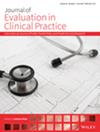The Effects of Fear of COVID-19 and Perceived Social Support on Postpartum Depression: A Path Analysis
Abstract
Rationale
Postpartum depression is a significant health problem that negatively affects maternal and fetal health and should be carefully evaluated by health professionals in extraordinary situations such as disasters and pandemics. This study aimed to examine the effects of fear of COVID-19, perceived social support, and some socio-demographic and obstetric characteristics of women on the risk of postpartum depression during the pandemic period using path analysis.
Methods
This cross-sectional study was conducted with 226 women over 18 years of age, literate, gave birth at term, were between 2 weeks and a year postpartum, could use smartphones, and had not had COVID-19. The data were collected using the instruments Personal Information Form, the Fear of COVID-19 Scale (FCV-19S), the Edinburgh Postnatal Depression Scale (EPDS), and the Multidimensional Scale of Perceived Social Support (MSPSS). Data were collected via online survey method between 14 November 2020 and 30 December 2020.
Results
The prevalence of risk of postpartum depression was 35.8%. The mean FCV-19S score was 19.72 ± 6.75, the mean MSPSS score was 56.69 ± 17.49, and the mean EPDS score was 10.03 ± 6.21. Binary logistic regression analysis showed that risk factors associated with postpartum depression risk in postpartum women during the pandemic family type (OR: 0.316, p = 0.05), satisfaction with childbirth experience (OR: 5.907, p = 0.003), fear of COVID-19 (OR: 1.104, p < 0.001), and perceived social support (OR: 0.942, p < 0.001). According to the path analysis, the χ2/degree of freedom value of the model is 1.35 and GFI: 0.99, AGFI: 0.96, CFI: 0.98, RMSEA: 0.040, NFI: 0.94, NNFI: 0.93, SRMR: 0.041 for path analysis. Path analysis revealed that having a nuclear family (β = 1.33), perceived social support (β = −0.13), having a history of depression (β = 3.61), fear of COVID-19 (β = 0.14), and satisfaction with the birth experience (β = −2.56) had a direct negative effect on the risk of PPD during the pandemic.
Conclusion
The findings suggest that strengthening social support, helping her cope with the fear of COVID-19, having a good birth process, and reasonable evaluation of their mental health history can alleviate the risk of PPD during the pandemic period. On the other hand, our findings may guide the development of prevention and intervention approaches for factors that directly and indirectly affect women's PPD risk during the pandemic period.

 求助内容:
求助内容: 应助结果提醒方式:
应助结果提醒方式:


